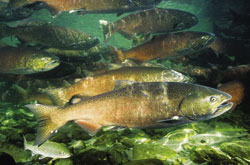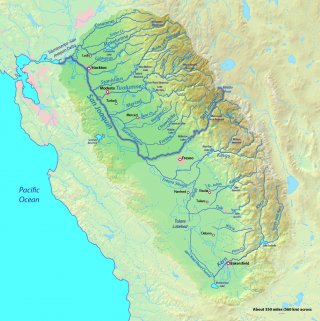Actions for Cleaner Water
The San Joaquin Valley depends on both groundwater and surface waters, including rivers, creeks, canals and more than 575 community water systems.
Safer Drinking Water
EPA is helping to meet that goal by providing essential funding for technical assistance to these small drinking water systems through nonprofits like the California Rural Water Association. In partnership with CDPH, local stakeholders, and four nonprofits, EPA continues to work with these communities to identify barriers to compliance and develop long-term sustainable solutions.
EPA has also worked with communities to improve water quality by providing funding for education and training to more than 200 valley residents about preventing pollution of drinking water.
A Healthier San Joaquin River
EPA is participating in the review of modifications to water quality standards in the Sacramento-San Joaquin Delta proposed by the State Water Resources Control Board. The first phase of the new standards will address freshwater flows for the protection of aquatic life in the lower San Joaquin River and three of its tributaries, the Stanislaus, Merced, and Tuolumne Rivers.
In June 2012, EPA awarded $59,000 in grant funds to Revive the San Joaquin, a nonprofit in Fresno, to establish a citizen-based water quality monitoring and pollution prevention education program in the city’s 15 miles of neighborhoods lining the riverbank. This effort is now underway.
Also notable is the success of a 20-year effort to reduce levels of the pesticide diazinon in two stretches of the river, totaling 17 miles. Diazinon was being used on orchards, and runoff was washing the pesticide into the river.
-
Success Story: Stakeholders Cooperate to Reduce Diazinon in the San Joaquin River (pdf)
(246.44 KB, 2013)
Enacting regulations, implementing biological controls and cover crops, and maintaining natural areas and hedgerows in orchards reduced organophosphate pesticides in runoff. -
Reducing Selenium in the Grasslands Watershed in the San Joaquin Basin (pdf)
(563.9 KB, 2011)
EPA Fact Sheet with information on the reduction of selenium in the Grasslands Watershed in the San Joaquin Basin.
Since 1994, a partnership including growers, the University of California, state agencies, and EPA have collaborated on the Biologically Integrated Orchard System (BIOS) project. Participating growers reduced their use of chemical pesticides, replacing them with biological controls, cover crops, and habitat for beneficial insects. By 2010, diazinon levels had dropped dramatically, and these stretches of the San Joaquin were removed from the state’s list of waters impaired by diazinon.
Related Content


